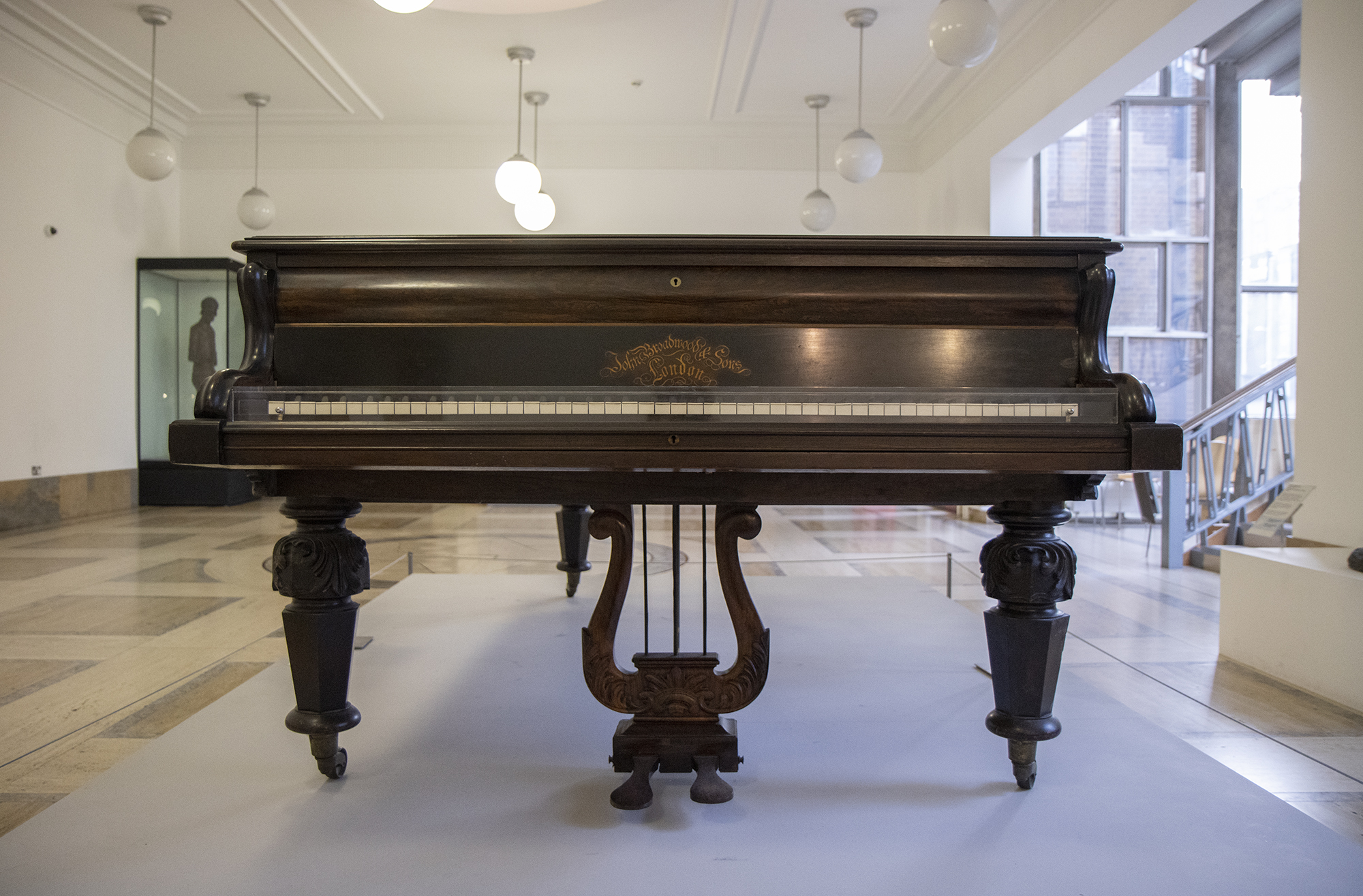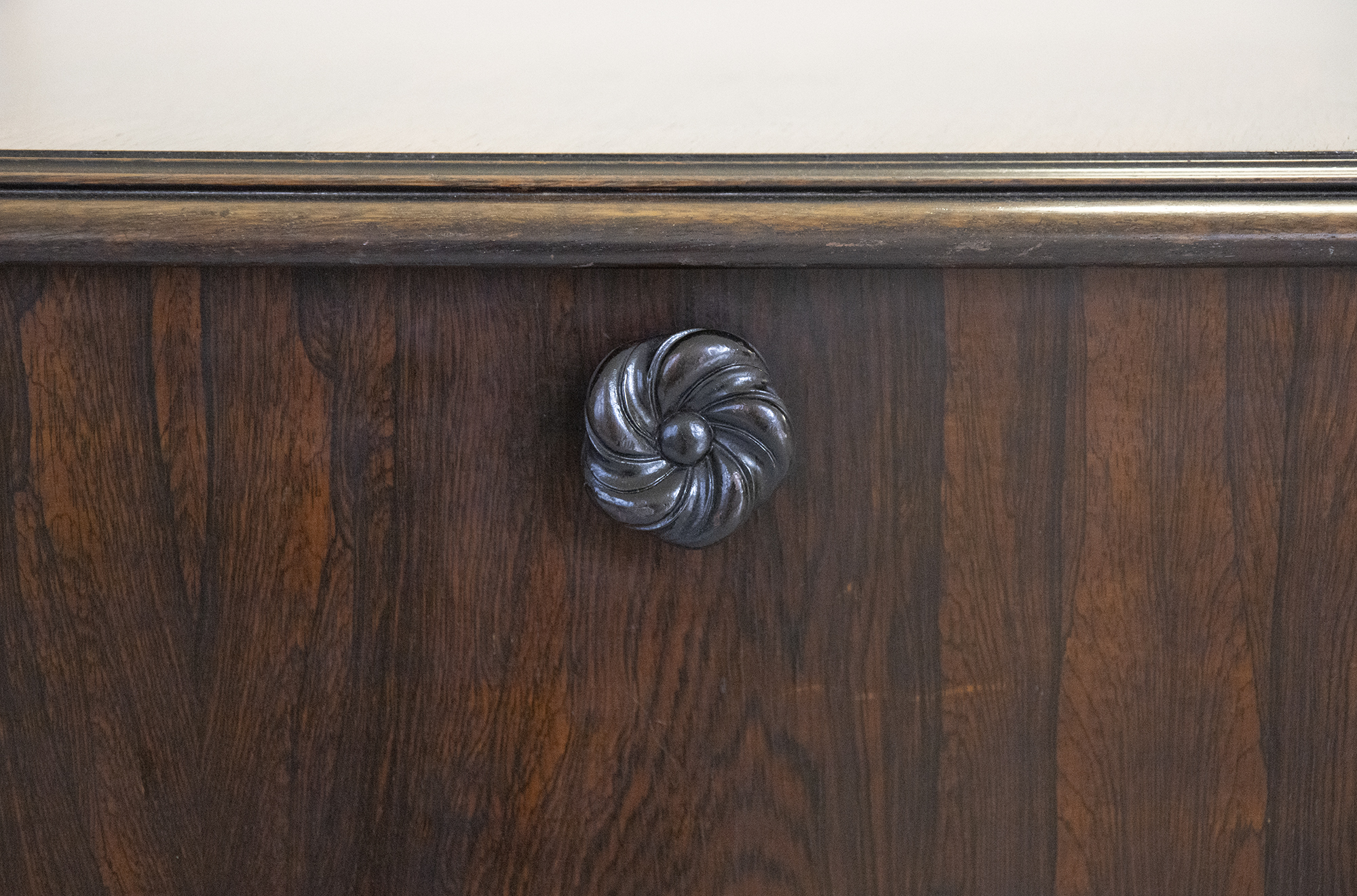George Eliot's 50th birthday piano
22 November 2022
What can a grand piano tell us about a 150-year old love story?
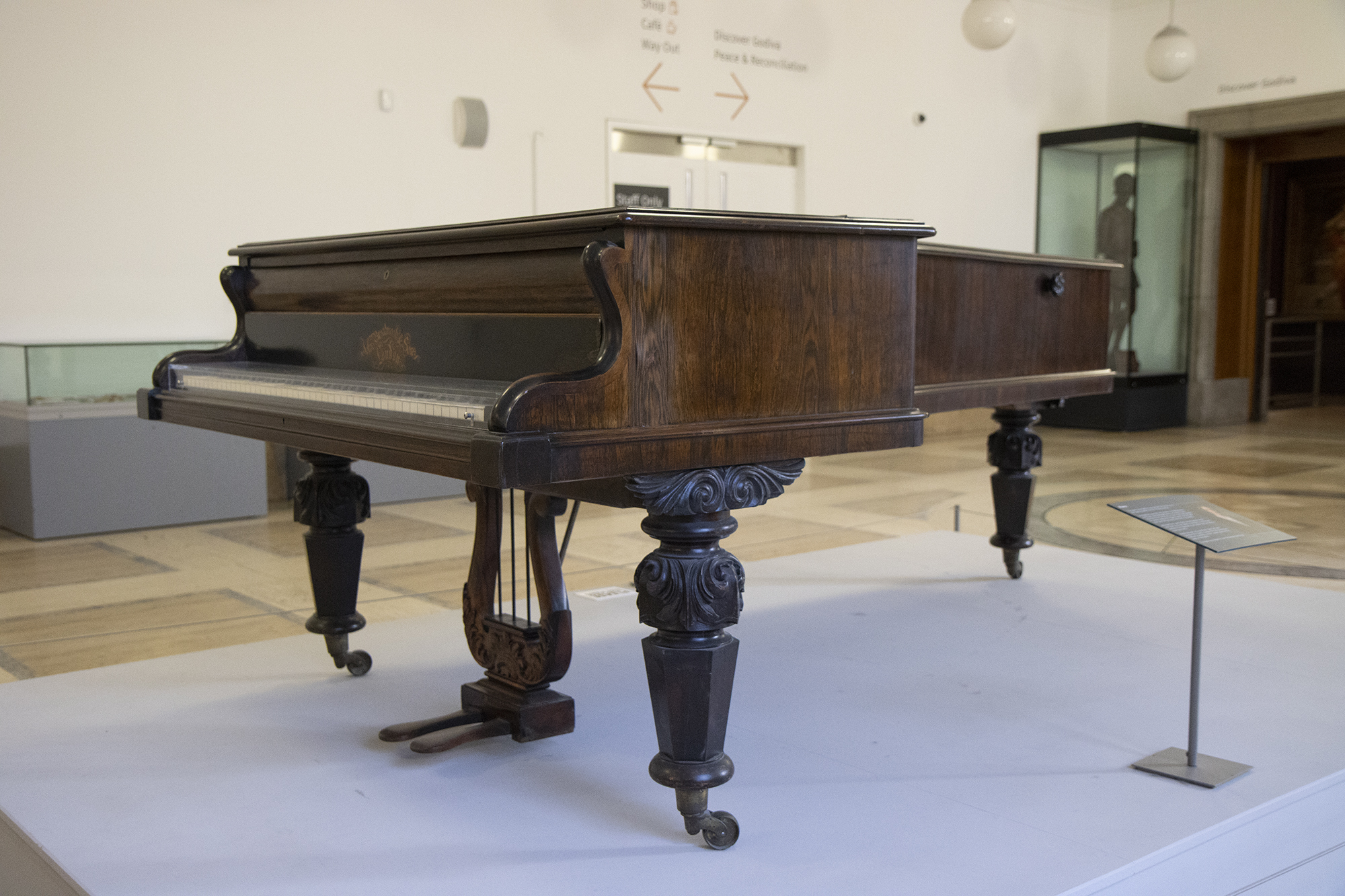
153 years ago today, this piano on display in our foyer was purchased as a 50th birthday present for novelist, poet and translator George Eliot by her long-term partner, George Henry Lewes.
Eliot (whose real name was Mary Ann Evans) was a skilled pianist, who had excelled in lessons whilst at school in Coventry, and music remained important to her throughout her life. As she writes in The Mill on the Floss, “There is no feeling, perhaps except the extremes of fear and grief that does not find relief in music.”
The piano was made by John Broadwood, one of the world's oldest piano firms, and it was from their records that we were able to confirm the date it was purchased. The piano would have been a significant gift, something they could likely afford thanks to the money Eliot was earning from her writing.
By the time of her 50th birthday in 1869, Eliot and Lewes had been living together for 15 years, although they never formally married. A philosopher and critic, Lewes was already married to Agnes Jervis when he met Eliot in 1851, but their relationship had long since cooled. Jervis had gone on to have four children with newspaper editor Thornton Hunt, but since Lewes was named on the birth certificate as the father of one of these children, he was considered complicit in her adultery, and thus was seen as having no grounds for divorce.
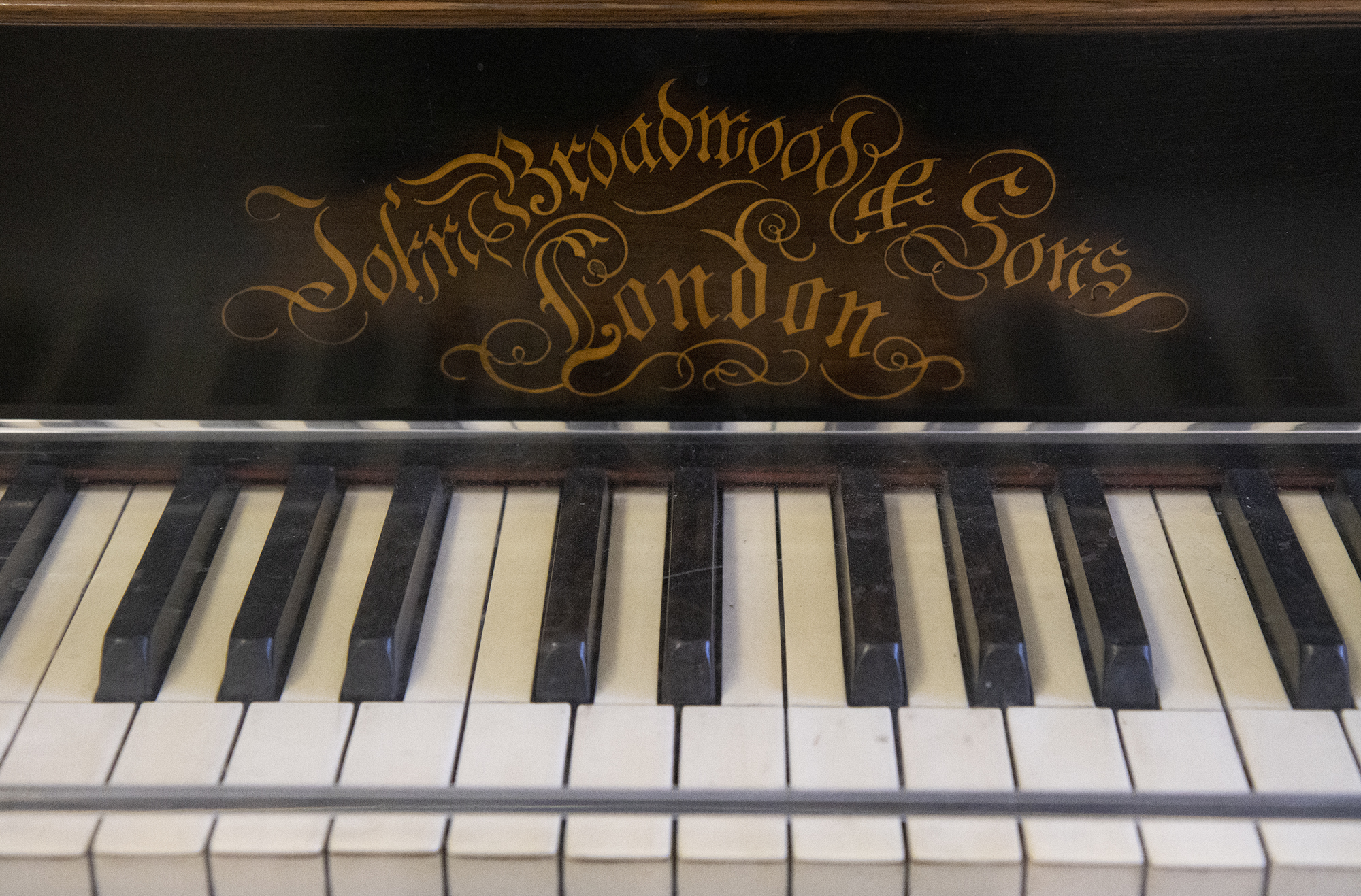
Despite the lack of legal recognition for their partnership, Lewes and Eliot considered themselves married from July 1854, when they ‘honeymooned’ in Germany before moving in together permanently. Over the following years, Eliot frequently referred to Lewes as her husband, and began signing her name as Mary Ann Evans Lewes, although her name was not legally changed to reflect this until after his death in 1878.
Arguably more shocking to polite Victorian society than the couple’s ‘unconventional’ arrangement was their refusal to conceal their relationship. Of course, values change, and today it's hard not to be won over by the couple's uncompromising commitment to each other in the face of judgement from their peers - although Eliot's literary success did eventually make socialising easier for them.
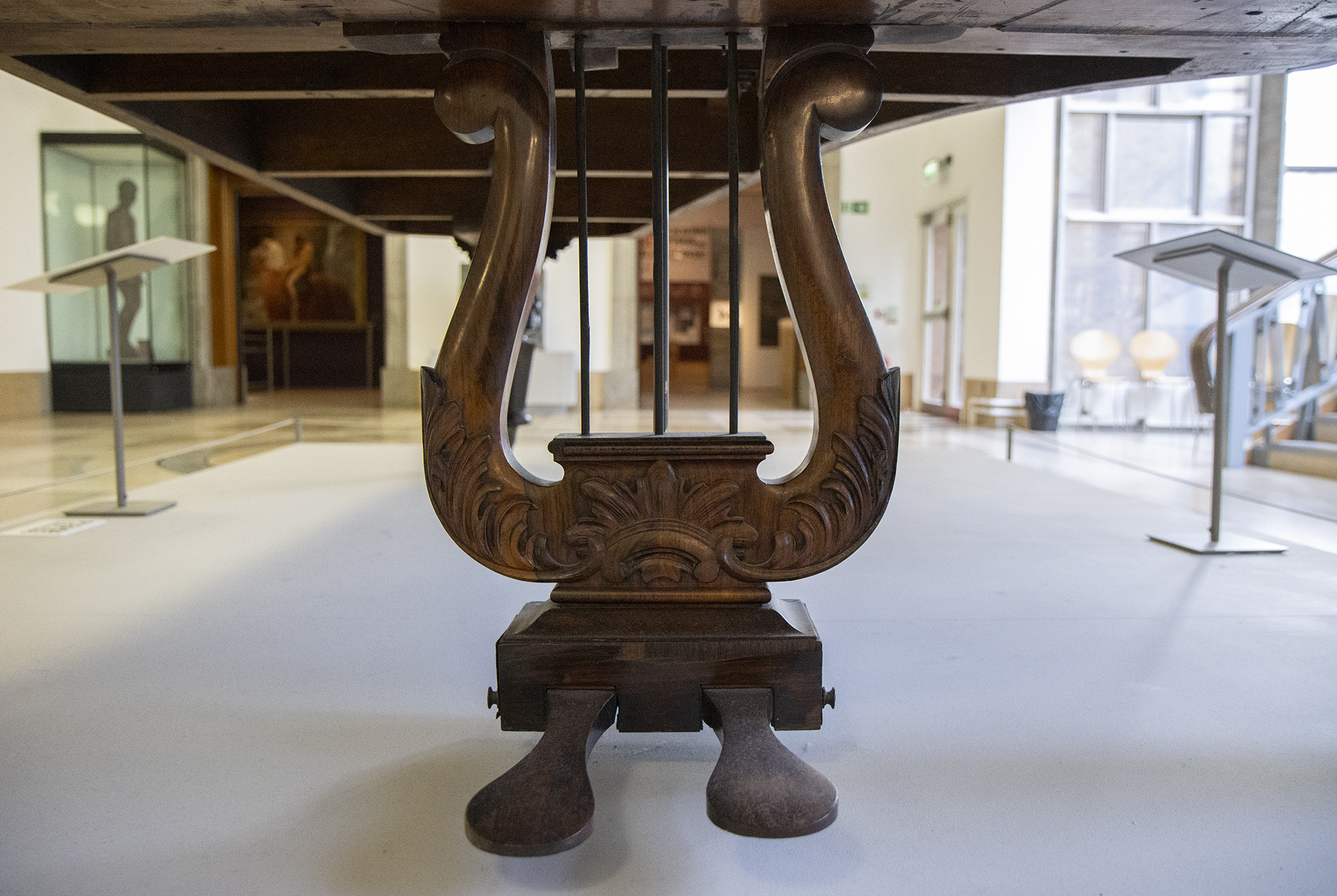
We know that by 1869, Eliot had started work on what would become her most famous novel, Middlemarch. In the book, the hasty and much-regretted wedding of the youthful and idealistic Dorothea Brooke to the stuffy Edward Casaubon, for whom marriage was “fated to become an outward requirement” seems to hint at Eliot’s own views on the institution, capturing the misery of being trapped in an unhappy marriage. After Casaubon’s eventual death, the heroine ultimately decides to follow her heart and settle down with Will Ladislaw, against her late husband's wishes, despite knowing how the choice will be perceived by society at large.
Eliot treasured the grand piano until her own death in 1880, when it was passed on to Lewes' son Charles. It was later acquired by Coventry Libraries, and became a founding part of the Herbert Art Gallery & Museum collection. Find out more from curator Ali Wells below.
